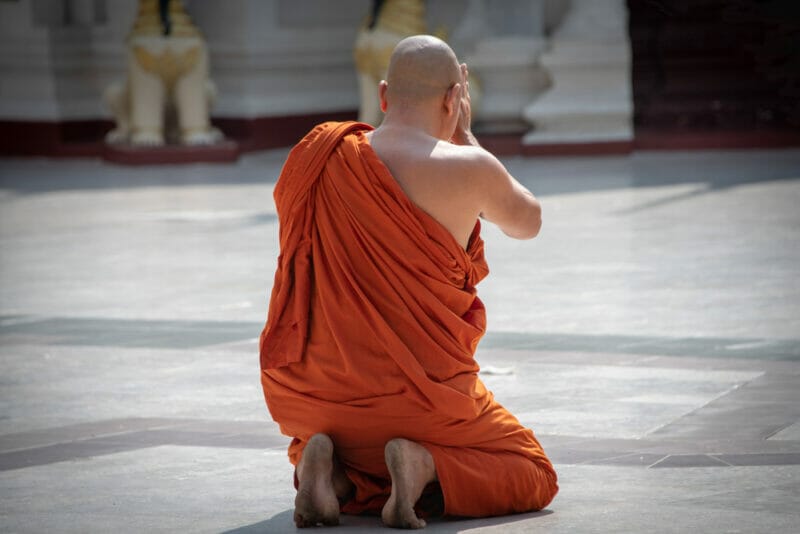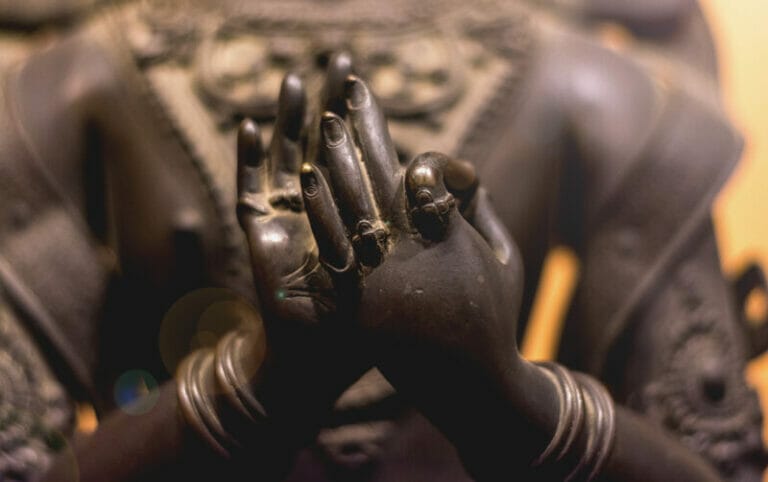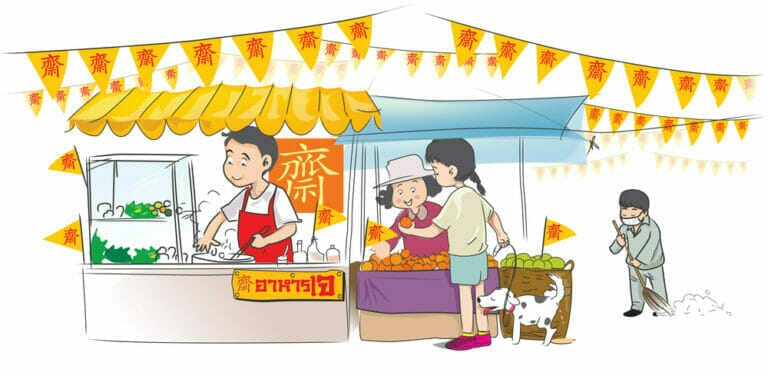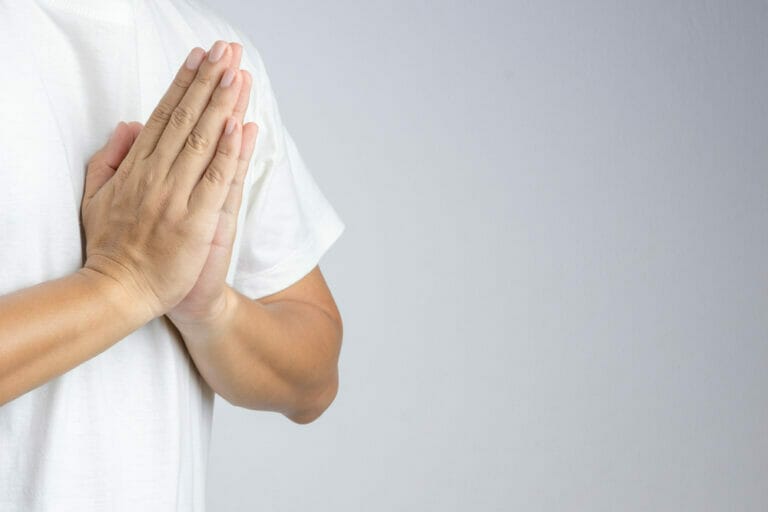Chivara Robe and Chivara Puja
The chivara, a monastic garment worn by Buddhist monks and nuns, holds deep significance beyond its function as an article of clothing. It is a symbol of the unity and communal bond within the sangha, or monastic community.
The chivara is a feature of all Buddhist traditions, although the style and length of the garment may vary. If you’re interested in learning more about the chivara, this blog is the perfect place to start.
The word “chivara” literally translates to “a worn-out garment,” and it is traditionally made from a length of cloth, usually in the colors of orange or yellow.
The chivara is wrapped around the waist and hangs down in front and back, either partially or completely covering the legs.
The Structure of Chivara Robe
The garment consists of three parts: the inner robe (antaravasaka), the outer robe (uttarasanga) and the cloak-type great robe (samghati).
The main or primary robe is the Uttarasanga. Sometimes it is referred to as the Kashaya robe. It can be wrapped to cover both shoulders, but most often the left shoulder and arm are left bare. Normally, the cloth is rectangular and measures about 6 by 9 feet.
Antaravasaka is worn under uttarasanga. Wrapped around the waist like a sarong, it covers the body from waist to knees.
Sanghati refers to an additional robe for covering upper body and keeping warm. It is often folded and draped over the shoulder when not in use.
Chivara Robe and Kathina Chivara Dana
In the Vinaya-desanaya, the Buddha outlined four types of dana. People who regularly observe moral precepts receive this type of dana. As a result, Vinaya-desana danas will provide greater benefits than Suttanta-desana danas.
They are:
- a) Chivara dana (offering of robes)
- b) Senasana dana (offering of places to live)
- c) Pindapata dana (alms giving and food offering)
- d) Bhesajja dana (offering of medications)
The ritual of robe-offering to Holy Order monks, known as Kathina Chivara Dana, is celebrated worldwide, primarily in Theravada Buddhist countries. Pali word “Kathina” denotes rigidity, hardness, unbreakability, and imperviousness to damage. Chivara means ‘robe’.
The auspicious ceremony takes place after the monsoon rain retreat of three months (Varsa Vassa).
During this ceremony, devotees prepare the threads, weave them, dye them, stitch them, and offer the robes all within a single day starting from sunrise to sundown.
Vegetable matter such as tubers, bark, flowers, and leaves – as well as spices like turmeric and saffron – are boiled to create a yellow color for the robe. The term “saffron robe” derives from this.
It is important to note that Theravada monks in southeast Asia usually wear spice-colored robes.
The bhikkhu should also prepare himself by making the most of his retreat, by following the tenets, and not leaving the monastery aside from attending to his teacher and his parents if they are sick, and returning within the seventh day.
Chivara Pujas
For Theravada Bhikkus, retreats or vassa vasa are only observed by those who have received higher ordination – Upasampada. They are the only ones eligible to receive ‘Katina Chivara’.
It is believed that the lay devotee who presents the “Kathina” receives immense and immeasurable merit, while the recipient bhikkhu, too, gains much merit and concessions.
The six highest merit-giving “pujas” (offerings) are as follows:
- 1) Offering
Kathina Chivara Dana - 2) Almsgiving to the Bhikkhus
- 3) Offering
Atapirikara - 4) Writing
Dhammabooks - 5) Offering lands for agricultural use
- 6) Building
monasteries
History of Kathina Chivara
The Kathina Dana had its beginning during the time of the Buddha, when 30 monks set out from Pava to meet the Buddha who was at Jetavana Monastery in Savatthi/Sravasti at the time. They could not reach in time, so they stopped midway on their journey and began a retreat.
After retreating, they headed towards Sravasti. They suffered greatly because of heavy rain while traveling from Pava to Sravasti. Because of their severely soaked clothes, they made a sorry sight.
The monks reached Jetavana Monastery, and having paid their respects to the Buddha, sat alongside him and the Buddha welcomed them. He asked them how their retreat had been, whether there was enough food for them to live on and how they were doing.
The monks responded that they had an enjoyable retreat. They also told him that they set out in order to meet him before the start of the vassa, but were not able to do so and related what had happened to them on their way.
Because the Buddha understood how the bhikkhus felt about getting wet under unavoidable circumstances, he recommended the use of a special robe.
Since then, “Kathina Chivara Dana” ceremony is held in all the monasteries where monks have undertaken vassa but this can be done only once in one monastery and once a year.
The kathina dana is a chance for followers to offer robes and requisites to the sangha who have just completed the three months of rains retreat.
In addition to being a merit making field, it is also an occasion to rejoice, celebrate, and give thanks to the venerable monks as well as show gratitude to the elderly and love towards the young.
Yellow Chivara Robe and Pandavleni Caves in Maharashtra
As I was researching Chivara robe on the web, I discovered that Pandava Leni (caves) near Nashik in Maharashtra have an interesting connection with Chivara robe.
These caves were named Pundru because of the Buddhist monks who lived there and wore yellow chivaras. Over time, the caves came to be known as Pandu or Pandav.
More information about Pandu caves can be found here:
https://www.indianetzone.com/59/pandavleni_caves.htm







